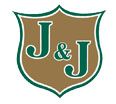There exists numerous insect groups in the US that inflict costly damage to structural and finished wood sources, including termites, powderpost beetles, carpenter bees, carpenter ants, and oldhouse borers. Initially, only one beetle species, hylotrupes bajulus, was known as an oldhouse borer. This species was the first wood-infesting beetle species in the Anobiidae family to become well studied in the US after it was transported to New England from Europe during the early colonial era. Today, several Anobiid beetles that bore into structural wood have been described in the country, many of which have also become known as oldhouse borers. Oldhouse borers are economically significant insect pests, as larvae bore into, and tunnel within structural wood in homes.
Some oldhouse borer species only infest single lumber items kept in storage as opposed to lumber in homes. These species develop as larvae within infested lumber items for as long as ten years before they emerge post-construction as winged adults. All other oldhouse borer species see female adults place their tiny eggs into the extremely narrow cracks and crevices on the surface of structural wood. After larvae hatch, they hollow out nesting cavities within the infested wood where they may develop for a period lasting from 3 to 10 years. Hylotrupes bajulus is the most well known oldhouse borer species, and they can be found throughout the eastern US, as well as a few western states, but they are most abundant in the mid-Atlantic region. In Louisiana, and other southeastern states, Xyletinus peltatus is the most frequently collected wood-boring Anobiid beetle species.
Xyletinus peltatus adults are active during April through September when they mate, lay eggs and larvae establish infestations in structural wood. Like subterranean termites, this oldhouse borer species requires high moisture environments to survive, making crawl spaces the most common area where winged adults mate and lay eggs. Naturally, the structural wood components most frequently damaged by larvae include subfloor lumber, cellar joists and support structures, resulting in costly damage. Unfortunately, oldhouse borer infestations are particularly common in southern Louisiana due to the abundance of old crawl spaces in homes where high humidity levels allow these beetle pests to thrive.
Have you ever suspected your home of being infested with wood-boring insect pests?




